It was interesting how the great Oceanic city began, it had started from an idea from one person online who had been watching the wave of people wanting to colonize the planet Mars. One voice spoke up asking why when the technology didn't exist in a way to safely create environments that humans and the related species necessary could we possibly be thinking of living on an uninhabitable planet at this moment in history? Someone heard that voice and then questioned what they suggested be done as an alternative. That person then suggested an under the ocean city, the creation of would and could help the step towards man's desire to escape the earth by creating stepping stone technology needed for the needed structures on other worlds as a test case and thereby creating a self contained city/country (depending on viewpoint).
What came of that kernel of an idea was a city which was then named Oceana, a descriptive name but it stuck. The planning stage didn't take as long as was thought it would, a major technology producer who was building cutting edge technology decided to take it on. They would of course implement as much of their technology in the project as well. Especially since they were the biggest producer of electric cars, you could not have a self contained domed city using pollution producing electronics, otherwise the air would be toxic to those living in the structure.
It was decided that there would be a central large dome with an actual city in the center, the outer areas would be farms and nature preserves. Now the central dome would have a temperature setting equivalent to the central plains of North America, the nature preserves would be dividing lines between the farms and help recycle air. There would be some wildlife carefully picked from multiple wild populations so there would be no possibility of close relations. Mainly things like rabbits, deer, some squirrels and birds. With the addition of some small predator animals, mostly the smaller wild cats to ensure vermin levels stay low. The main product of this large city will be producing vegetable food production. The only real nod to producing meats will be in the form of rabbit and fish farms.
There would be smaller connected domes for farming areas with other climates. One would produce citrus trees and those that can tolerate the same temperatures. Another would be set up with tropical plants like bananas, as well as a more arid desert like area for foods that grow best in those climates.
The important parts of the interior would contain geothermal power plants, which will also be used to heat the different domes to the appropriate temperatures. There would also be some air recyclers, the hope is there would be enough green plants to help do it more organically than using a technology backup. The idea is to enable the residents to not have to rely on anyone but themselves in case it comes necessary that they have to take care of problems that could cause a large amount of deaths. There would have to be a docking station of some sort for submarines could either drop off supplies or take surplus out for sale. There of course would be major desalinization plants, which will also supply the city with all necessary salt needed for the population and they would sell off the excess.
The city itself will be prebuilt with the concept that the “downtown” area would be built with sky scrapers that would keep it's first floors for shops or restaurants. Most of the sky scrapers would be designated either office spaces or residences. The out lying areas of the city would have single family homes, smaller apartment buildings and most of the schools. There would be localized shops and restaurants as well. So there would be plenty of opportunities for businesses for the people of the city to have.
It was decided to institute a digital currency system for the city to use instead of a paper or metal monetary system so as to not waste resources. Trash would be totally recycled, if something could not be it would not be permitted in the city.
On the social side of the city, homes could not be purchased; they would be allocated to people based on need. Families would apply for a home set up for children, otherwise they would be allocated a home designed for a couple or a single person. Which means that once children grew up the parents would have to go to a different home that was smaller so another family could use the larger building. Being a closed system this is something that is pretty necessary to ensure that there is enough living space. If the city started to get to big for what was there space wise the plans for how to construct the domes would be kept in both paper and digital format for the city to use in construction. It would also be in case there was an unfortunate accident involving the domes themselves.
The school system decided upon would be set up in the Japanese model, as it seems to educate people the best overall. Or at least a template for the school system, with a very structured school day beginning early in the day. With the students arriving at the school for breakfast made by the school. Then the students would all attend some kind of physical education class. For this students would be tested to see what they would excel in and what they would not. There would be a rotation of four different classes each student would take based on skill and ability. Most will take some for of a martial art, also swimming class would be a requirement; living on the bottom of the ocean means you have to know how to swim. After that class there would be a line up of standard courses (even for lower grades) mostly history, science, and maths. There would also be language studies in two different classes, one being the official language which would include a comprehensive reading course. The second would be secondary language studies. There would be at the start 2 colleges so there would be competition to be the better school. The idea is college would be for those who want to have more knowledge than the average person, there would be some jobs within the city that would need a higher than high school degree but not a large amount overall.
The city would need to be built in a location where there is a geothermal vent, a good supply of minerals for potential mining for necessary metals for repairs and use in the city itself. It would also have to be situated in a location that isn't as seismically active as other locations. One was located in the Pacific ocean between Australia and South America, it also had a good bed of bedrock for the city to be built on. Or should I say dug into as before the city is built a large complex of under ground shelters are built for emergencies that could be shut off from the domes in case of a major breach of the dome wall.
The public being informed of this city being built tended toward two opinions of it. That it was either a very interesting and good idea or that it was some kind of government plot to create a perfect utopian society. However enough interest was generated that there was a very long list of applicants for wanting to live in the new city. That's when things became more interesting in the construction of this city. The designers knew what they were hoping to build there, so they would have to be strict on who would be allowed to live in the city and they'd have to stick to that. They did however think that people who did the building of the city itself should have the option to live within it, so that would be a number to figure into the starting population.
The first requirement was that no one who committed a major crime would be accepted (major being in this case; murder, grand theft, rape, child abuse, animal cruelty), they were looking for those who would be a benefit to the society they were creating. However they did not want to exclude someone who did something dumb one time, and other crime was on a case by case basis. They also had to have a skill (minus children of course) that would be of use within the city. As in not someone just wanting to start a new life because they cannot keep theirs together. Another requirement was that they had to either be able to swim or be able to learn to, again living at the bottom of the ocean it's necessary. People also had to not be claustrophobic as they would have to travel via submarine and possibly need to be able to stay in the underground shelters if there was an issue with their home.
The technology company had to create new types of building equipment that could work underwater, and also not produce pollution as most of the machines would later be incorporated into the city. The city planners also decided that while the people who have been attached to the world wide web would still need access to that, but also have a city wide connection that was contained and hope that at some point people within the city would chose to stay connected with those within their home only.
A few interesting things were discovered while the actual building of the city took place, it was discovered that there were a great many minerals that could be of use nearby. Including quantities of what are called rare earth metals, which would enable the city to provide the city with electronics made on site. Also there was discovered in one of the proposed dome locations an archaeology site was discovered, appearing to be some kind of ancient city. It was enclosed in a dome but then left alone for after the building process when it would be investigated.
The city planners decided that the farms and wild places would be populated first, in part again to help with the air and to ensure that there would be food ready when the citizens arrived to the city. However they put the farms and the farmers in first so that the animals imported would know where the human places would be (if the deer population got out of control the wildlife management would adjust the population and send the animals to a meat processing plant for sale). These areas were given a three month period to see how well the city functioned, though there was a small skeleton “crew” of people residing in the city who monitored the necessary machines operating the city itself.
The interesting thing is the crops in the farms grew exceedingly well, better than they did on the surface. The fish farms found a way to have a “pen” on the outside of the dome to raise small quantities of tuna fish, they won't grow to full size before being processed but it will provide a large amount of fish to the city. The animals in the wild areas also seemed to take to their new homes, with the small amount of expected die offs in certain areas till they balanced out.
The city planners did find a way to create a light source to mimic the sun's light enough that the animals did react to it properly. They also created a series of lights to mimic the moon light over a given month, so that there would be some “natural” night lighting. A complex “rain” system was created to ensure that everything could grow properly. There was a set amount of days where there was suppose to be rain with some random days tossed in for the benefit of the wild life living with in the dome.
The residents arrived within the great city and everything moved very smoothly as a structured city. No cracks ever appeared in the dome, a few people did have to be sent back to the surface as it was discovered later their heart muscles weren't healthy enough for the pressure at that depth the city was at. Much less where the shelters were.
The city planners came up with an interesting way to set up all businesses in the city so it would be fair. Even people who couldn't afford a business based on their surface worth could have one, the city gave loans. The payback was simple, in the first ten years of the city, the city would receive 10% of the buisness' earnings. Then it would be paid off entirely.
The colleges both acquired a set of archaeology professors who would be using the find contained in the city as a way to teach about archaeology. The interesting thing about this was that the city planners had made sure their personal viewpoints were polar opposites. This way every angle would be looked at even if it was just in an effort to disprove the other. The city planners also had the foresight to create a normal library in a section that could have been a shelter so that it could be shut off if disaster occurred. They made sure to have at least one copy of most texts out in the world in it (yes a BIG library), this is where the hard copy of the blue prints for the domes were kept. As if it's not safe enough for the blue prints how could it keep the books safe.
The initial population of the city was a mixed bag of peoples from around the world who all agreed to abide by the rules the city planners set, including that the primary language would be English. Everyone was required to display proficiency in it before they arrived in the city. Over the first ten years minor issues were dealt with when necessary, including a new disorder exclusive to people of the city who were born on the surface. A great many people would get panic attacks after a couple years from not seeing the open sky, so the city planners had to devise a way for the day times to have a simulated sky on the interior of the domes to stem the issue. At night it wasn't as much of an issue, and an interesting discovery was made that had the city planners disable the “moonlight”. Apparently due to the depth of the location a lot of the local aquatic life has bio-luminescence, which would create an interesting aurora affect. It was breathtaking to look at and most of the city dwellers considered it a treasure they had access to.
The story will actually start about sixteen years after the creation of the city, as we see how the first generation of Oceana people live in comparison to their parent's generation.

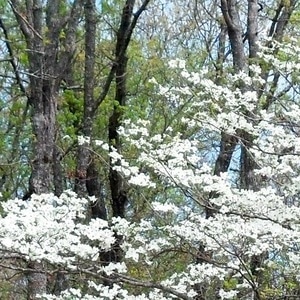

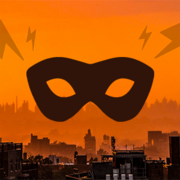



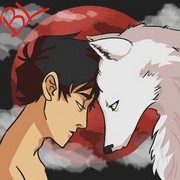

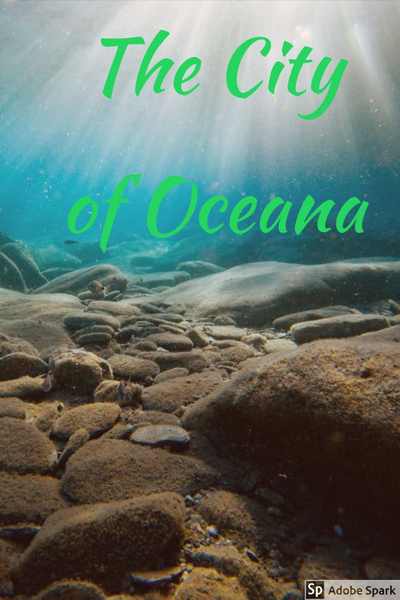
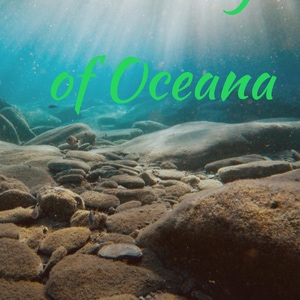
Comments (0)
See all